Cycling isn’t just for kids and racers. It’s a great form of exercise for older people, too. It’s an exercise you can perform at an intensity that suits your needs and abilities, is low-impact and can be very social if you ride with others.
The advent of electric bikes has made cycling much more accessible for older riders. You don’t need to be super-fit to keep going, you can carry more stuff and you aren’t so limited to flat rides.
However, there is also a wide range of non-assisted bikes that will suit older people, from step-through town bikes to recumbents.
While many seasoned cyclists will continue to ride mountain bikes and road bikes late into life, there are plenty of people, and particularly those less familiar with cycling, who may benefit from a bike designed specifically for seniors.
Here’s everything you need to know about bikes for seniors: types of bikes, what to look for if you’re an older rider buying a bike and, most importantly, the huge benefits of cycling as you get older.
Benefits of cycling for older people
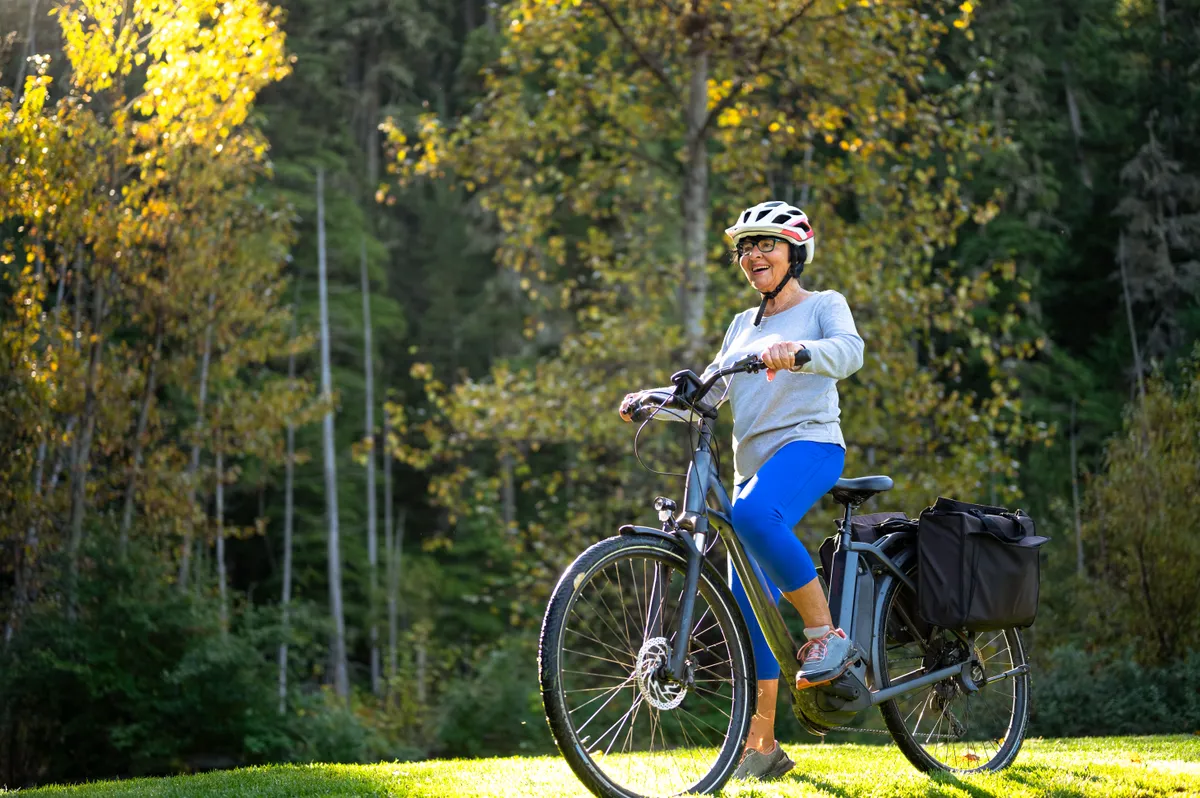
It goes without saying that any exercise is better than no exercise, but there are a number of reasons why cycling is a particularly good form of exercise for seniors.
We’ve outlined 27 benefits of cycling, many of which apply just as much to older riders as to younger ones.
Maintaining cardiovascular fitness is increasingly important as we age, but there are other benefits of exercise beyond that, from a lower risk of cancer and strokes right through to better bowel movements. The balance aspect of cycling is also important for motor coordination.
In general, moderate-intensity exercise is considered to yield more benefits than lower intensities. When cycling, you can exercise as hard or as gently as you choose and it’s easy to hook up a heart rate monitor and a bike computer to keep tabs on how hard you’re working.
Electric bikes are really popular and some electric bike motors will modulate their power output to ensure your heart rate stays within a pre-defined range.
The low-impact nature of cycling means it’s less hard on muscles and joints than many forms of exercise, but will still strengthen muscles not just in the legs but in the upper body and arms from balancing and steering. It’s a form of exercise you can keep up even if injured or suffering chronic pain.
Being active, getting out in the fresh air and having new experiences are all vital to keeping healthy into your senior years.
Cycling is a very social activity, too. Ride in a group and you can have a chat as you go, while a cafe stop with a large slice of cake is essential on the best rides.
What to look for in a bike for seniors
There are a few features that make a bike better suited for older cyclists. When Islabikes designed its Icons range, aimed at riders over 65, it took a lot of the design features that make its children’s bikes easier to ride and transferred them to its seniors’ bikes. These include lightness, comfort and easy bike gears. You’ll find similar features on other brands’ bikes for seniors too.
Stable design
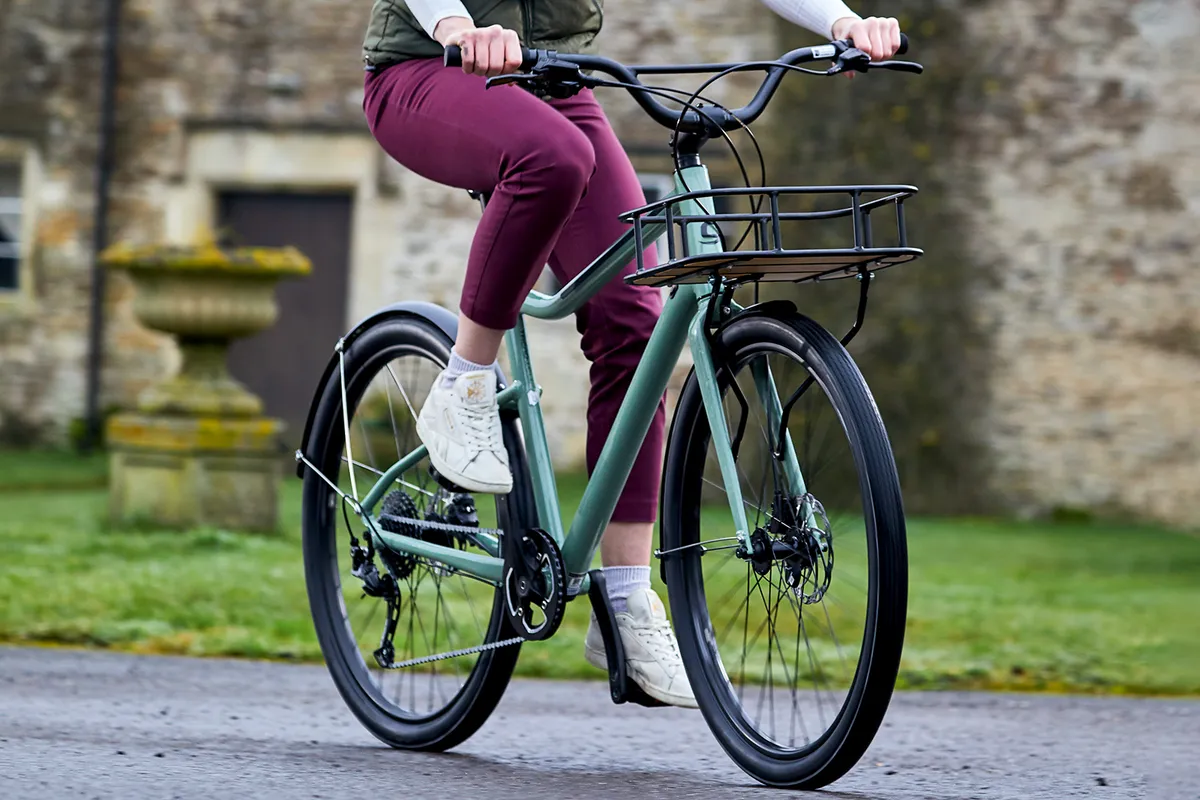
A more stable design will help if balance is an issue. That means a lower seated position, which will also help with putting one or both feet down when stopping. Of course, balance stops being a problem on a bike with more than two wheels, and tricycles or four-wheeled bikes designed for seniors are available.
Another feature that can aid stability is wide tyres. Bikes designed specifically for seniors are likely to have wider tyres than most hybrid bikes. This also helps with ride comfort because the tyre will absorb road imperfections much better, although it can make the bike harder to pedal – an electric motor can help here.
The geometry of a bike for seniors is likely to include a longer wheelbase, with frame and fork angles designed for stability as well.
Comfortable ride position
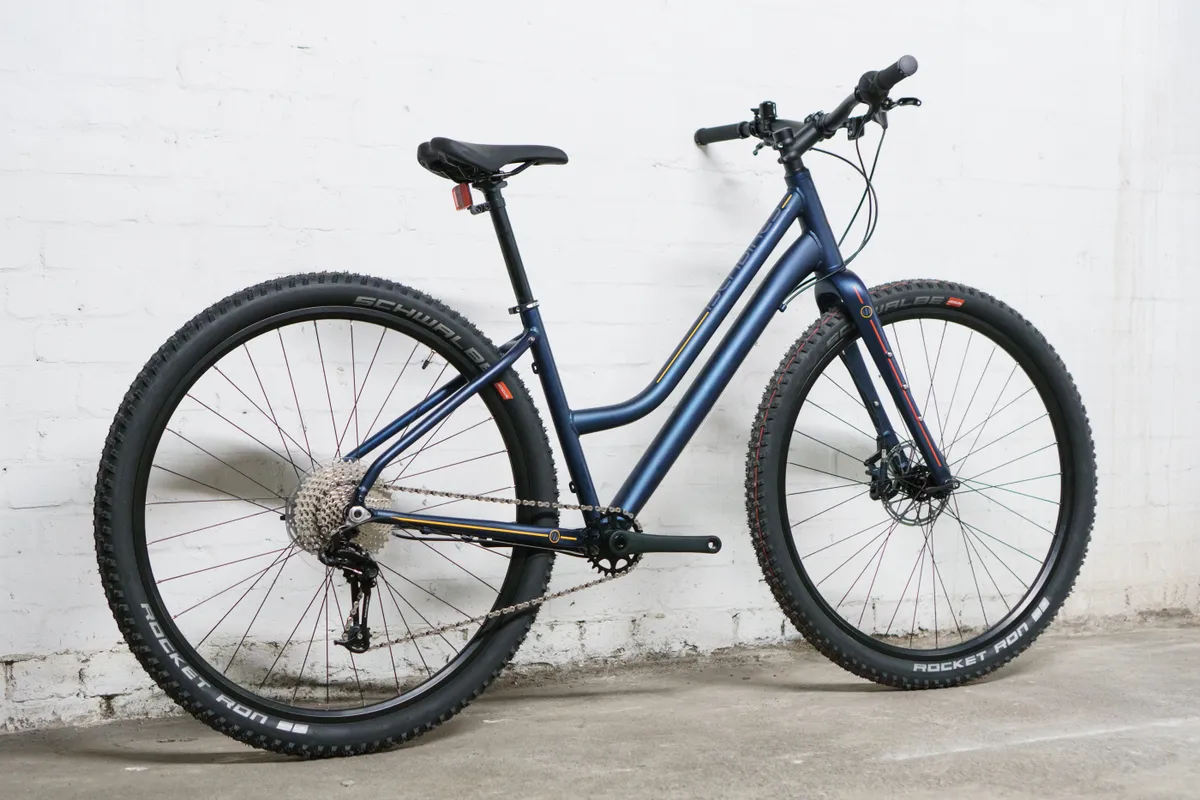
Getting on and off the bike could be a problem for some older people. Conventional bikes often have high top tubes that are difficult to lift a leg over, and this can even be the case on classic women’s bikes, where it is lowered.
Many brands now offer low step-through frames, which means the rider doesn’t have to lift their leg so far to get astride the bike.
Islabikes goes further with its Icons bikes, with the option to fit a dropper seatpost, which lowers the saddle to make getting on and off even easier. The saddle can be raised again quickly once riding.
A bike for seniors is likely to have a more upright riding position than one designed for more agile riders. It’s also likely to position the handlebars closer to the saddle. This should be more comfortable than a leant-forward ride position. Recumbent bikes take this a step further and have a leant-back ride position with a seat and back support.
Low gearing
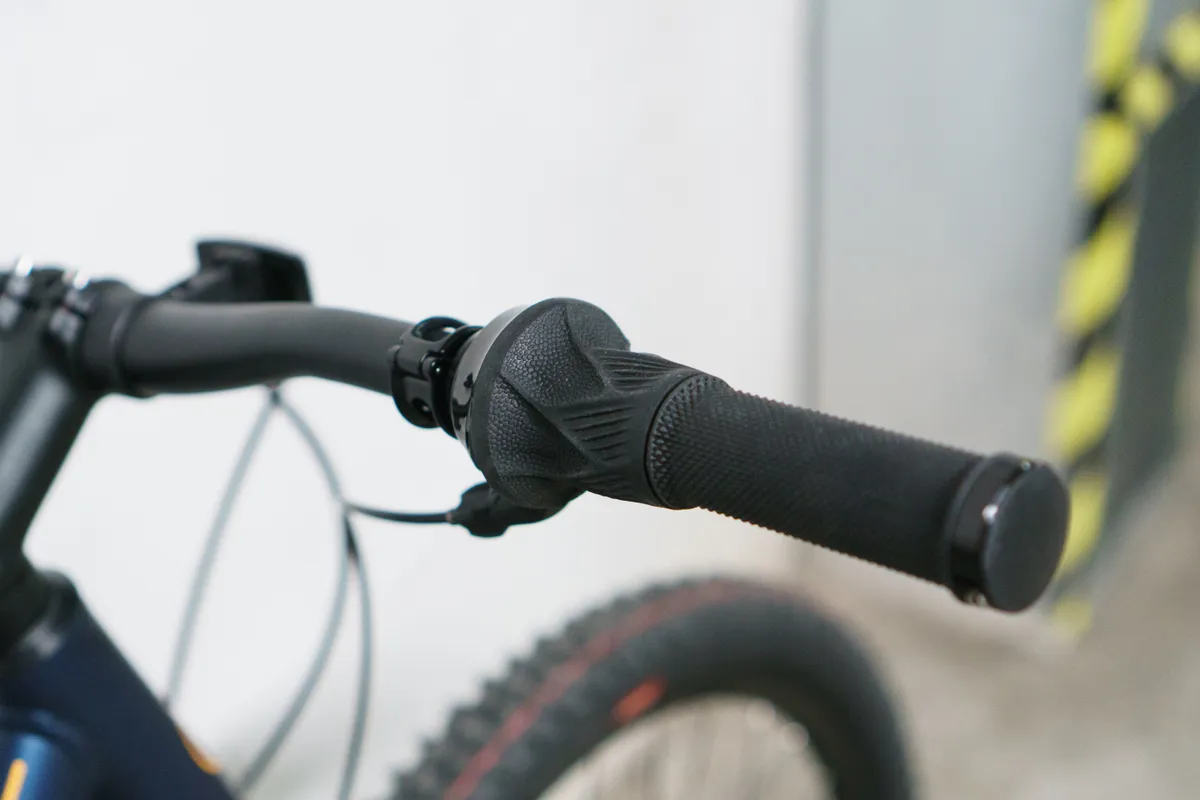
For a rider who may have less muscle mass than a younger cyclist, low gearing means a bike is a lot easier to ride, particularly at lower speeds. That typically means a smaller chainring.
A wide-ranging cassette is also beneficial because it gives plenty of gears to ride faster and to tackle uphill stretches.
Easy gear shifting is an asset, so a grip shift or light-action trigger shifters are worth looking for. Islabikes fits grip shifts because it says that this allows the rider to use the grip of the whole hand to change gears, rather than relying on the strength of the index finger and thumb.
Carrying capacity
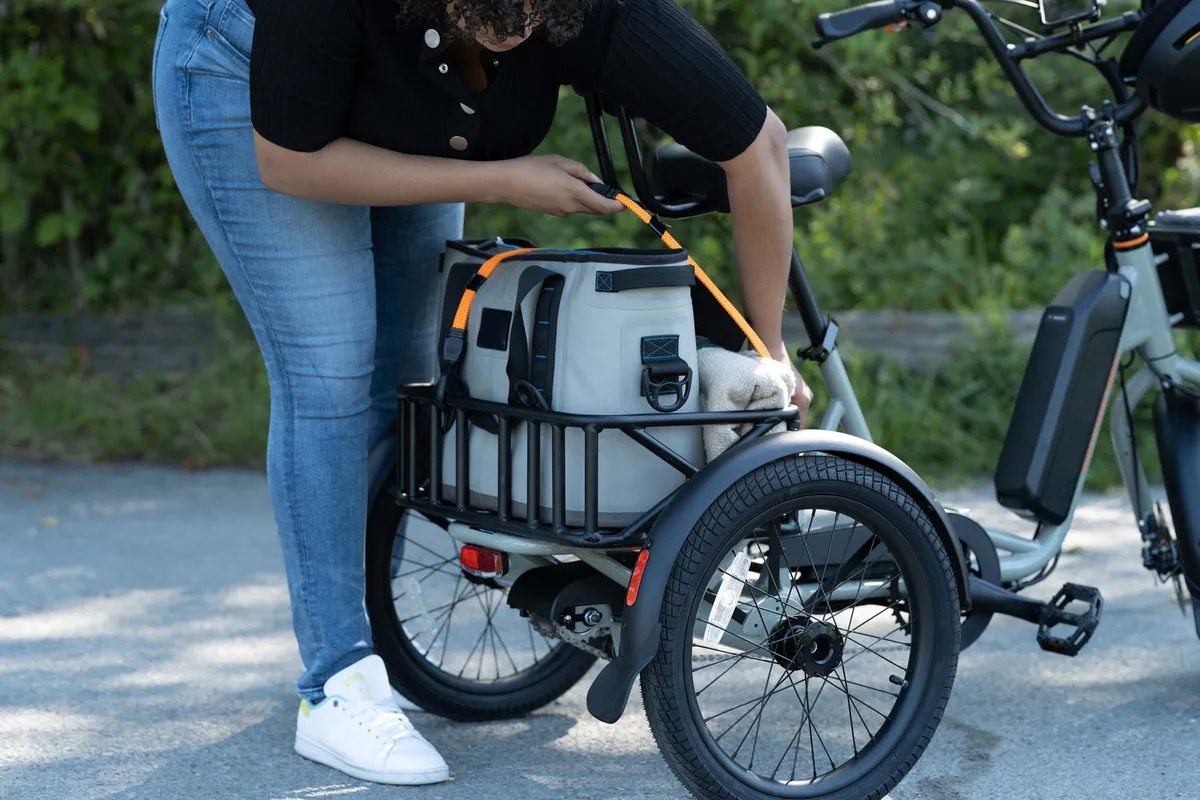
If a bike is going to be ridden shorter distances and may be parked up for shopping or a cafe stop, it’s important it can be locked up securely. That means carrying one or more bike locks, which are usually heavy, and having enough room for other items, so the ability to carry luggage on the bike is important.
That may mean a rear pannier rack, or at least the option to fit a saddlebag or bar bag. The latter may affect a bike’s steering though, if it’s loaded up significantly. In any case, carrying weight on the bike is likely to be a more comfortable option than a backpack or hip pack.
Lights
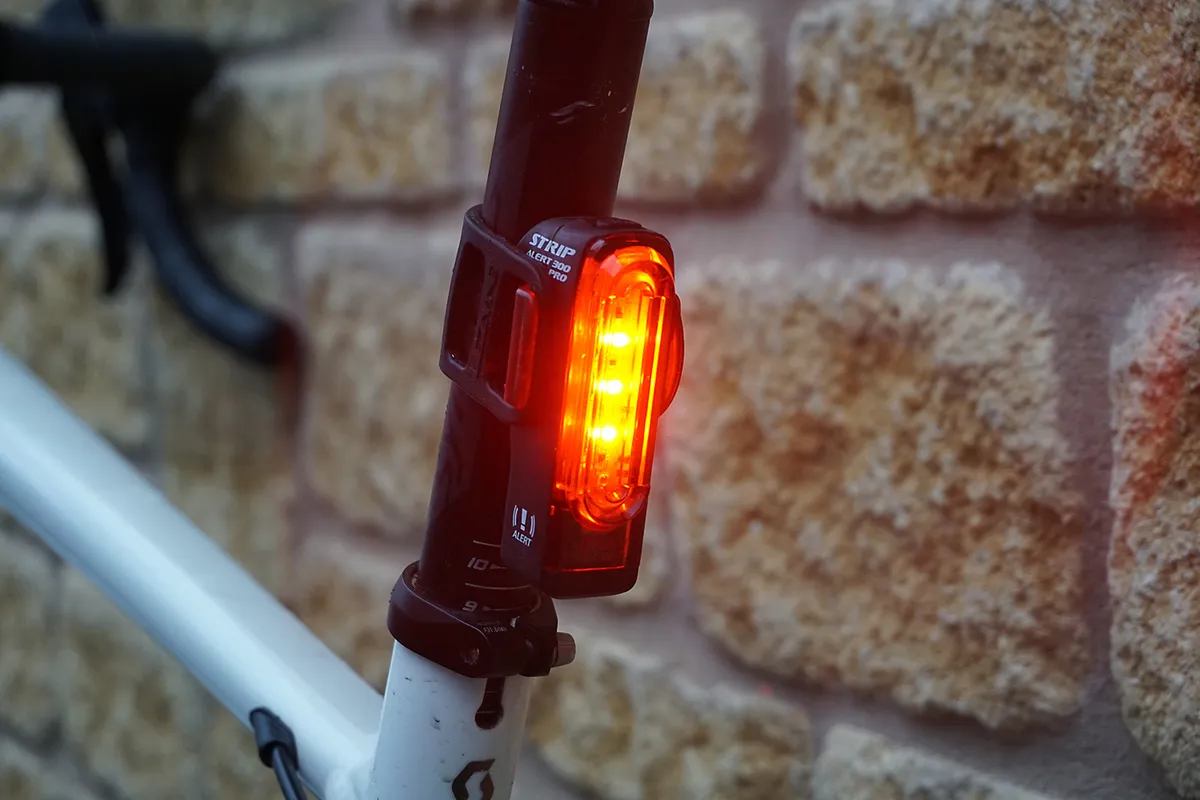
Although a bike may never be ridden in the dark, a set of the best bike lights is invaluable to up a rider’s visibility, even in the daytime. An excursion that takes a bit longer than planned may easily stretch into twilight throughout much of the year.
Other features
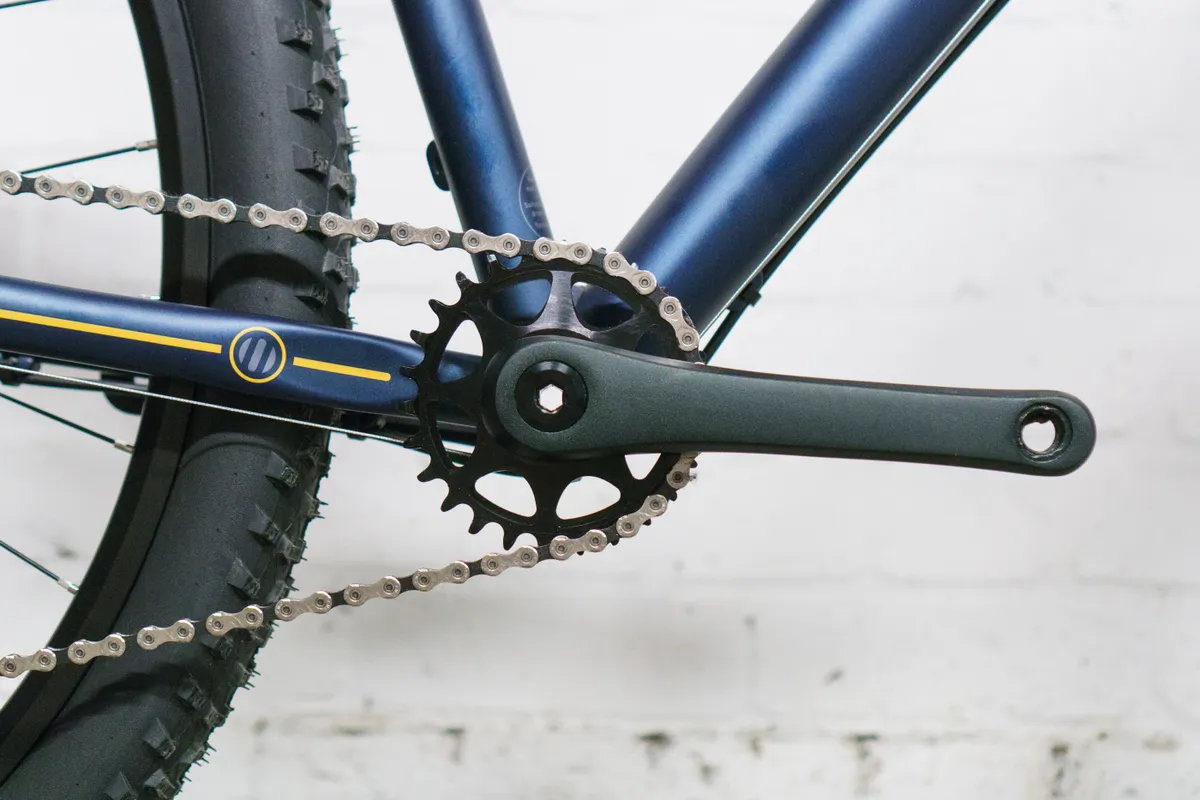
There are plenty of other features that can make a bike easier to ride for seniors.
Islabikes has thought through many of these. Its bikes come with shorter cranks, which also place the pedals closer to each other. This means the rider has to move their hips through less of an angle, if mobility is an issue. It also helps ensure ground clearance in a bike designed for a low ride position.
Islabikes fits short-reach brake levers and uses hydraulic disc brakes, which require less hand strength to operate than rim brakes or mechanical disc brakes. They also work better in the wet. Mudguards are also a benefit for wet rides.
Another senior-specific feature on Islabikes’ bikes is rims that are designed to make removing and refitting a tyre easier, in case of a puncture. That also means carrying and using a bike pump, although there are other options.
A kickstand is an advantage when pulling up for a cafe stop or shopping.
Weight
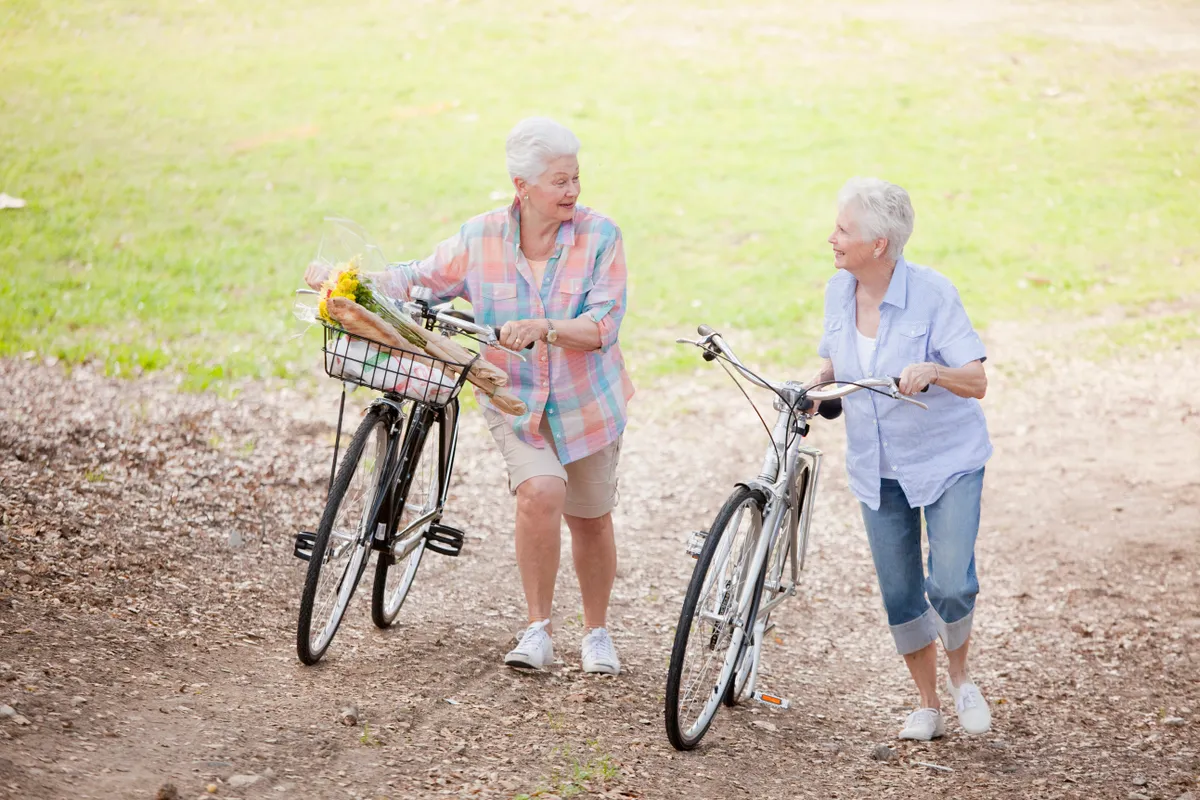
While some manufacturers make lightweight bikes for older people, many bikes suitable for seniors can be quite heavy. That’s not such an issue if you’re riding on the flat, particularly if you have a motor to help, but can make riding up a hill more of a chore.
If there’s any lifting or off-bike pushing needed on a ride, or to store the bike, extra weight quickly becomes a significant inconvenience, so it’s worth looking for a bike that’s below 15kg.
What are the best bikes for seniors?
Electric bikes for seniors
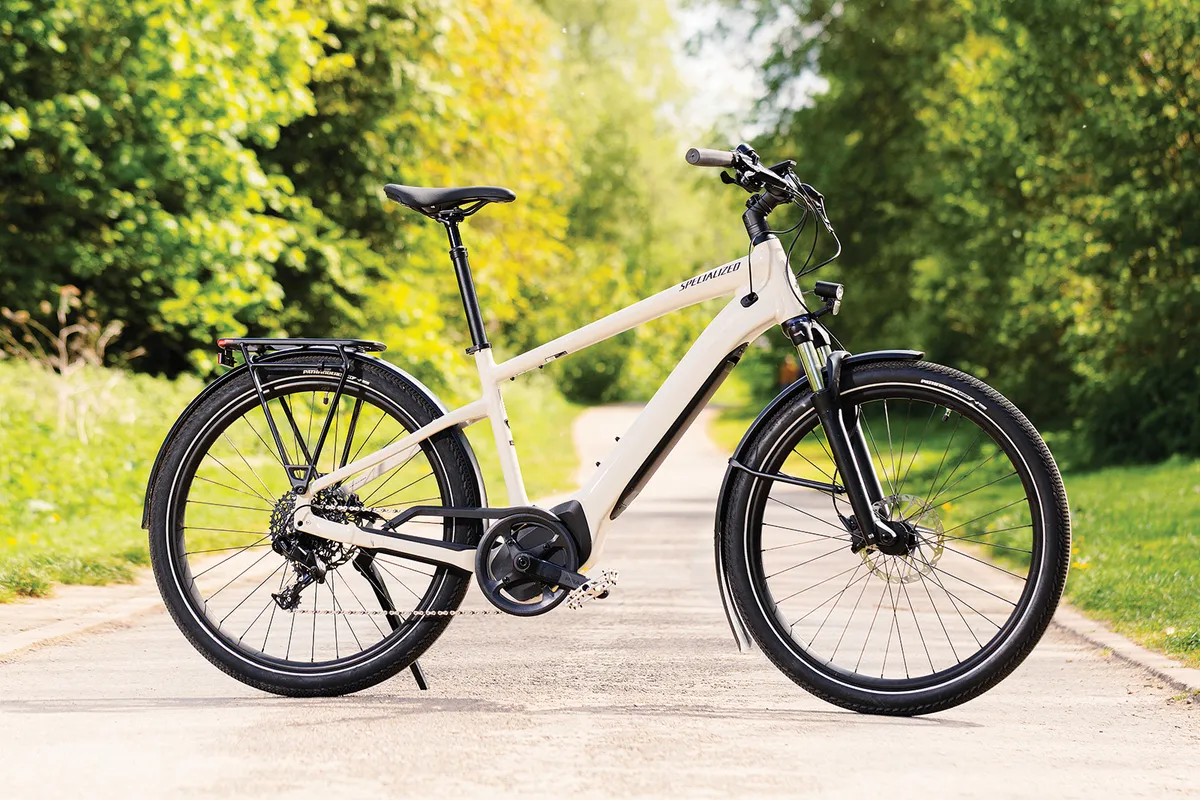
The advent of electric bikes has been a huge boon for lots of people and has proven transformative for many older riders. The motor helps you ride with less peak effort. In fact, studies have shown it’s possible to get just as good a workout on an electric bike as on a pedal-only bike and to get fitter as a result.
But for someone looking for a less strenuous ride, having assistance to make starts easier and smooth out hills is a huge benefit of riding an electric bike. Just getting along a little faster thanks to the electric assistance is a plus for many riders.
An electric bike will typically be a few kilograms heavier than a non-assisted bike though, so having somewhere where it’s easy to park is important. Charging also means either plugging the battery into a mains adaptor while it’s still on the bike, or removing the battery to take it somewhere to charge.
Charging sockets can be awkwardly placed on some electric bikes and a battery will weigh several kilos if you need to remove it to charge it, in both cases making charging the bike burdensome.
It’s worth looking out for a user-friendly charge port design and making sure the bike can be placed easily near a power outlet.
Almost all styles of bicycle can be bought with electric assistance nowadays, so you can mix electric power with any of the bikes for seniors that we describe below.
Step-through bikes
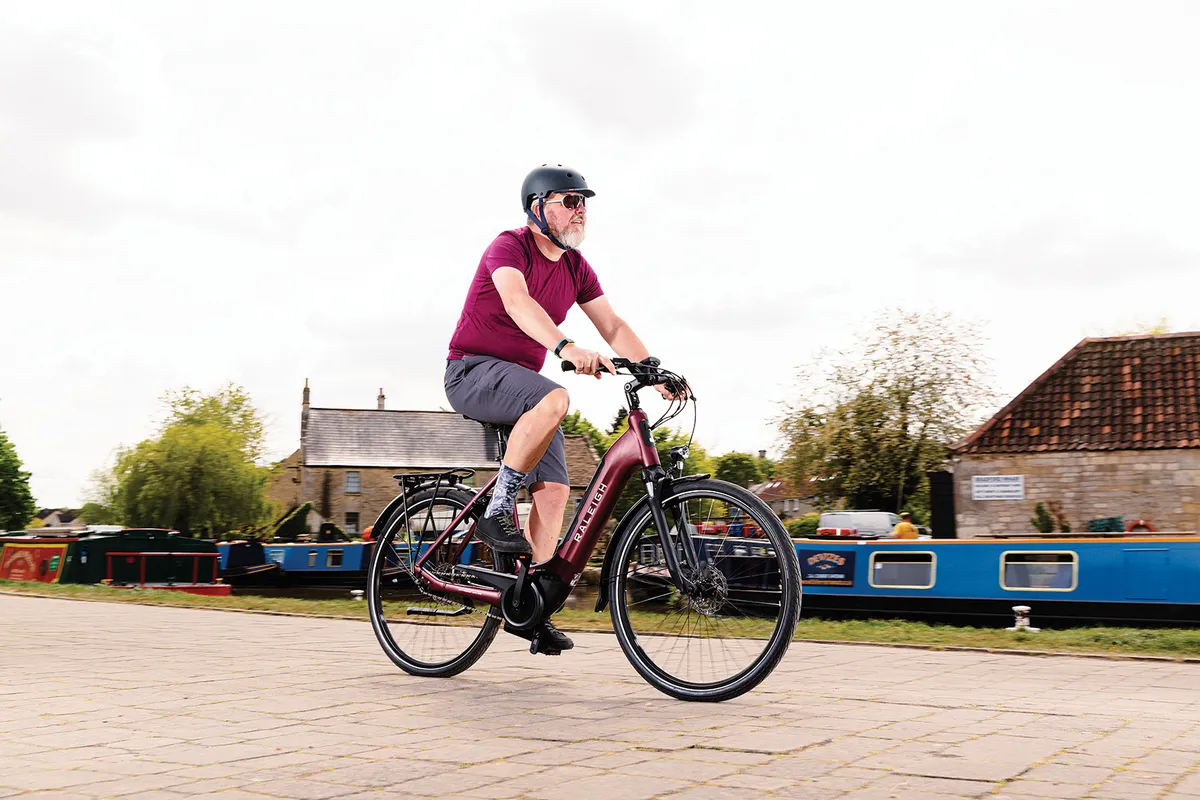
Step-through bikes are a great option for older riders, because they’re a lot easier to mount and dismount than a bicycle with a crossbar, or even a sloped top tube. It’s easy to get one or both feet down when making a stop.
A number of brands make bikes with a low step-through.
The Islabikes Joni is designed for older riders and has an extra-low step-through design to make getting on and off particularly easy. Dutch brand Van Raam (which has a wide range of other specialist bike designs) also makes low step-through models. Even mainstream brands sell low step-over bikes, such as the Specialized Roll.
There’s no reason why a step-through design can’t be combined with an electric drive system, and bikes such as the Specialized Turbo Como, Raleigh Motus Tour and Islabikes e-Joni offer both.
Adult tricycles
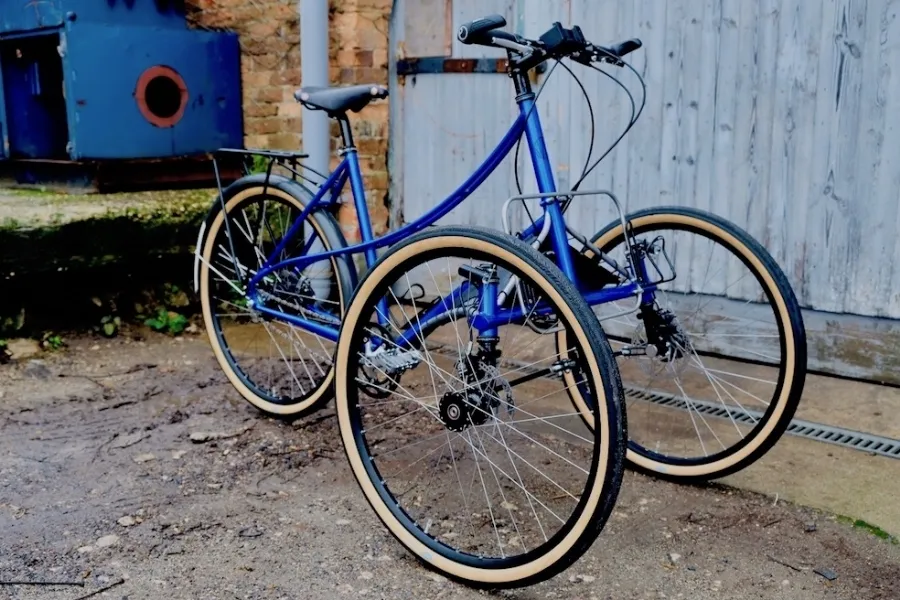
For older riders who are concerned about their balance, a tricycle can be a good option. Tricycles make setting off and stops and starts a lot easier because you don’t need to find your balance when you start to pedal. With the stability of a tricycle, it’s easier to carry luggage than on a bicycle too.
Adult tricycles often come with as many gears as a bike, so they’ll help you tackle hills. They use many standard bicycle components and are no harder to maintain than a bicycle. They’re a bit harder to store though and can be awkward to move around when not riding.
One thing to be aware of is tricycles don’t corner like a bicycle, because you can’t lean into a turn. Therefore, it’s important to take cornering gently to avoid losing the stability that comes from having a third wheel.
A few different brands offer tricycles, catering for older riders or the adaptive bikes market. We’ve not tested any of them yet, but in the UK Jorvik Tricycles and Mission Cycles have a wide range of electric and non-electric models.
Van Raam makes tricycles, as well as low step-through models and other specialist designs suitable for older riders, all of which are available with or without electric support.
Recumbent bikes
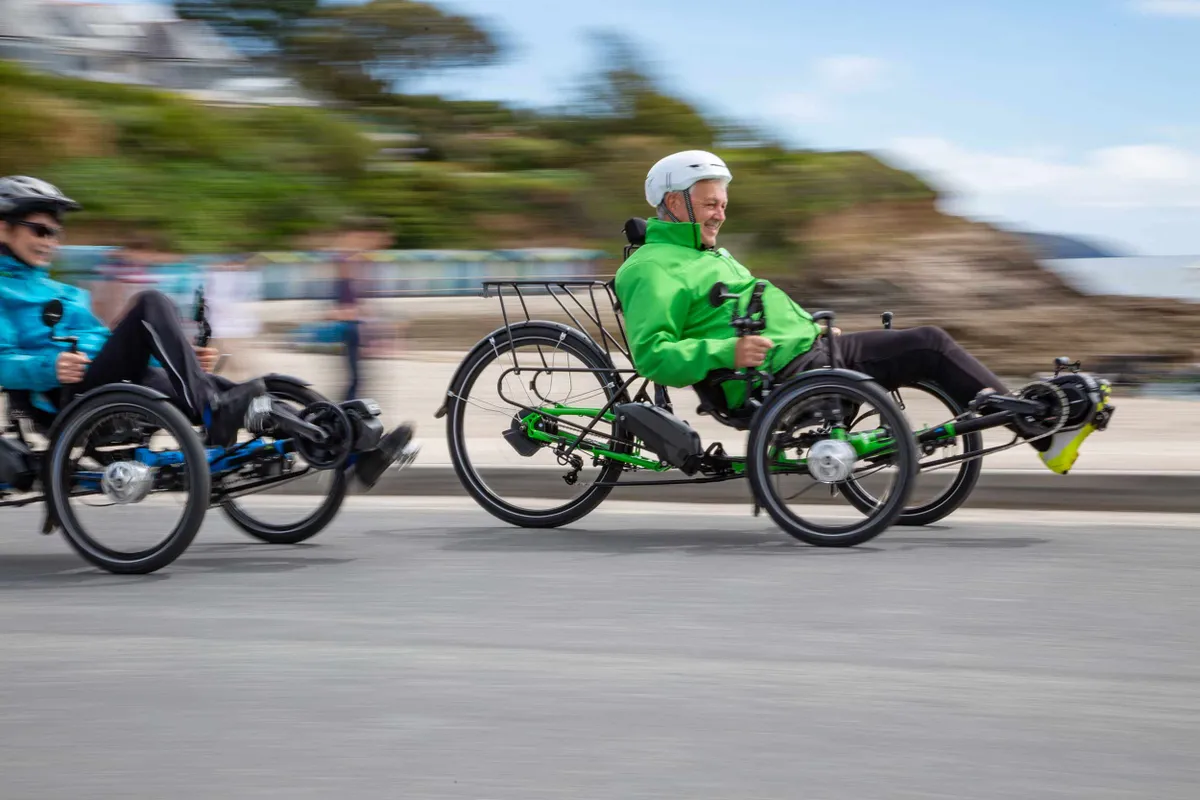
Many bike designs require a rider to be bent forward over the handlebars. The degree you lean forward varies enormously, but bikes designed for seniors usually aim to support a very upright riding position. There is often a short distance to the handlebars, which are placed high up so they’re easy to reach.
If sitting upright on a saddle or leaning forward is difficult, a recumbent or semi-recumbent bicycle or tricycle may be the answer.
These designs typically have a seat rather than a saddle to sit on and a backrest. They position the rider in a more leant-back position rather than sitting upright. The pedals are usually placed well forward of the rider.
A fully recumbent bike may be awkward to get into and get riding, but semi-recumbent models adopt a less extreme riding position that’s higher up and easier to get onto. These recumbents also make it easier for traffic to see you.
As with other bike types, recumbents are available with electric assistance and there are tricycle recumbents and semi-recumbents too, which avoid the need to balance. Van Raam sells recumbent and semi-recumbent designs.
In the UK, Get Cycling sells Van Raam’s recumbent bikes as well as a wide range of other specialist bikes.
Exercise bikes
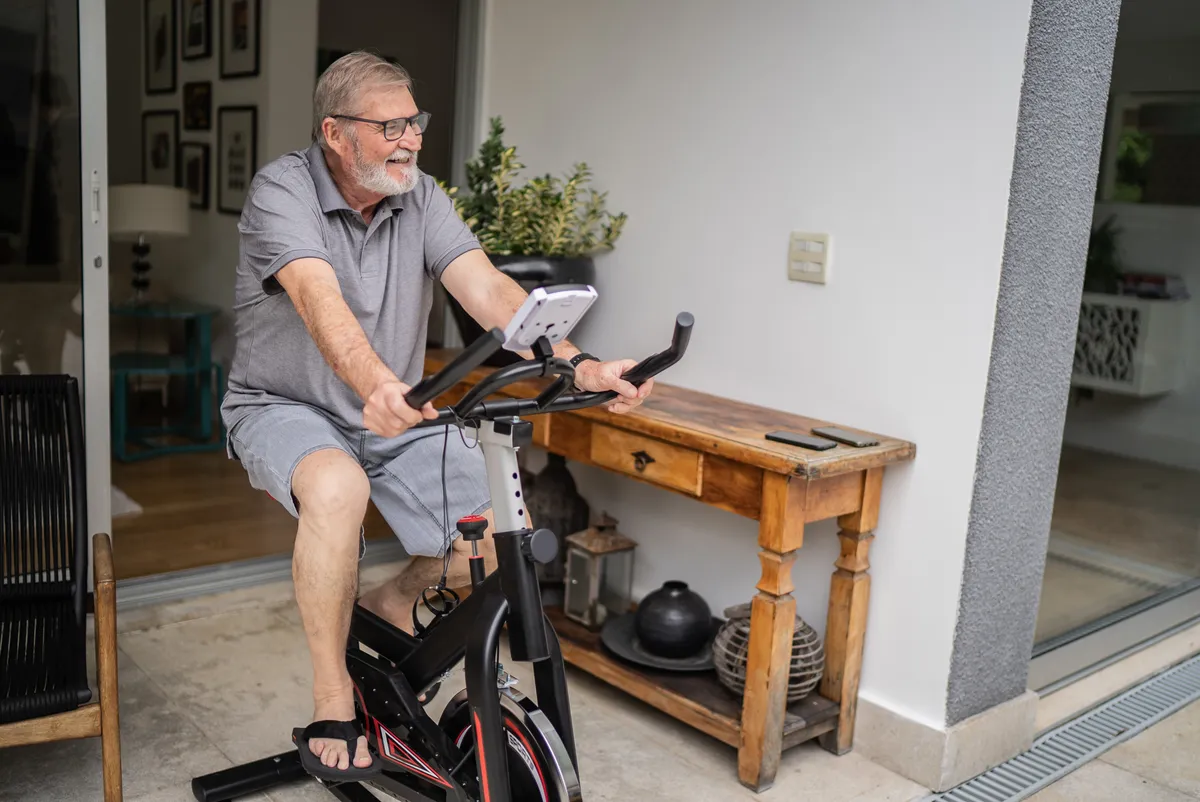
Riding indoors is just as beneficial for health as riding outdoors and there are plenty of exercise bike options available.
The main advantages of an exercise bike are that the rider is not going to need to deal with traffic and outdoor conditions, there’s no balancing needed (although needing to balance can be beneficial from a health and coordination perspective) and it’s easy to start and stop when the rider wants.
The best indoor bikes include automatic control of resistance so the rider doesn’t have to change settings as they ride. They can also be hooked up to a chest strap or wrist-based heart rate monitor to keep track of exercise intensity and maintain it within preset limits.
As with an outdoor bike, ease of mounting and dismounting an exercise bike is important, particularly because exercise bikes typically seat the rider a little higher. A box or step can help here though, because the bike isn’t going to go anywhere.
Many of the considerations when choosing an outdoor bike for seniors apply to exercise bikes. A comfortable reach to the handlebars and the ability to adopt a more upright ride position may be beneficial.
Fortunately, the best exercise bikes typically have lots of adjustability, so it’s possible to alter the position of the contact points for a comfortable riding position. It’s often possible to shorten the crank length as well.
You can find exercise bikes that look after your back. These include a seat with a backrest rather than a saddle. Others have a recumbent seating position, which makes it a lot easier to get onto the exercise bike and a lot harder to fall off.
It’s worth considering where an exercise bike will be used and stored. Some can be very heavy and may need to be kept in one place. Stability from a wide base is important to make riding easier, but almost inevitably that means extra weight.
Higher-quality exercise bikes usually need an external power source, which will limit where they can be placed.
